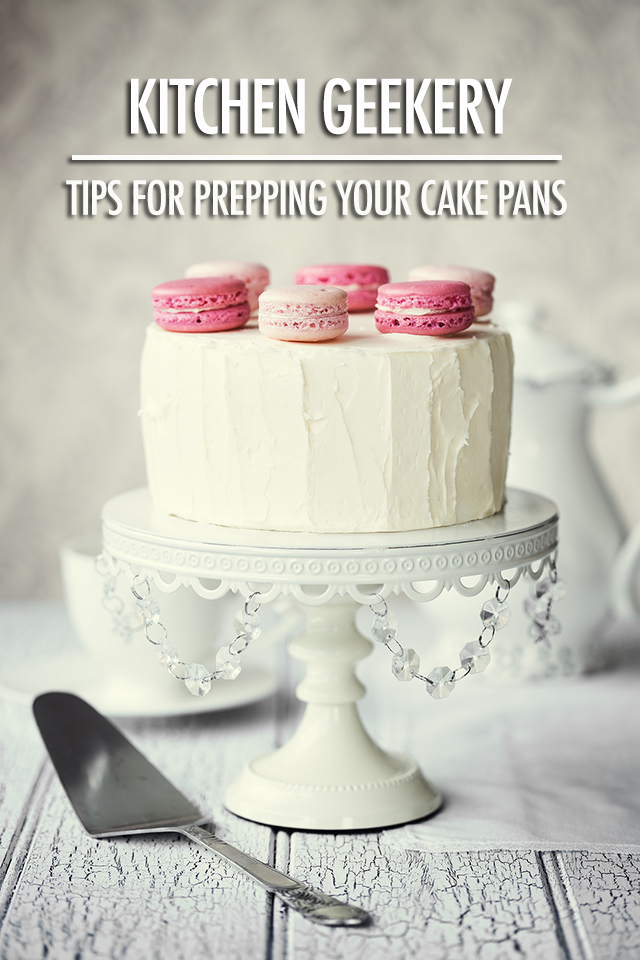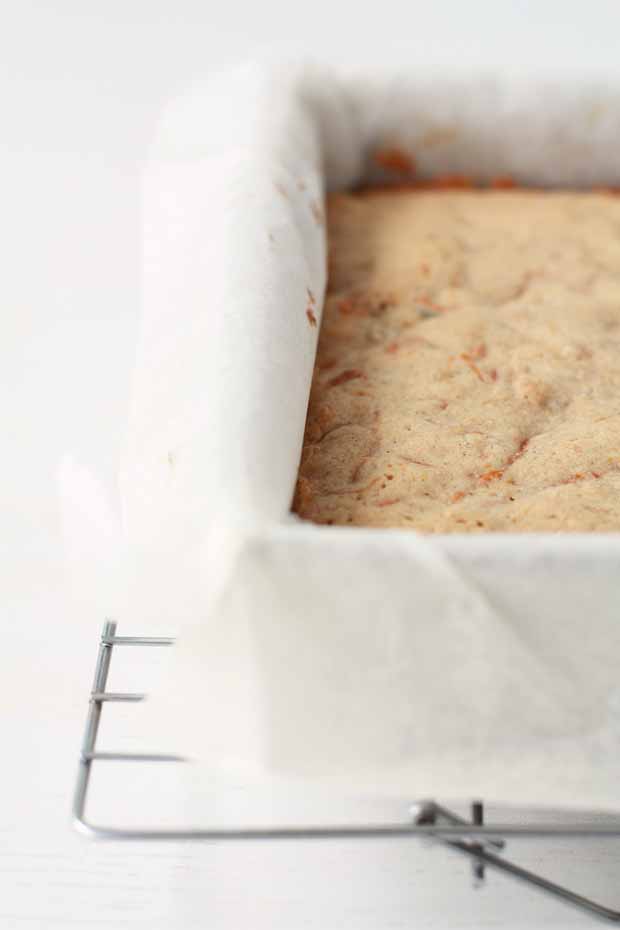This month on Kitchen Geekery, Dr. J. give us some tips on prepping cake pans for the perfect cake and the science behind the rules and the exceptions!

Confession: I loathe prepping my baking pans before I tackle a new recipe. I really can’t stand this step, probably because I am lazy, and really, all I want to do is start weighing and mixing ingredients so that I can quickly get to the eating part. However, as tedious as pan prep is, it’s not a step you should skip, unless you want your cakes to come out in pieces as you desperately try to scrape them out, tears running down your face. This is the point in the baking session when I plop on the floor and eat the cake straight out of the pan, which isn’t such a terrible ending. After all, one should never let good cake go to waste… But in case you are trying to avoid this whole situation, here are some tips to avoid sticky cake situations.
To Grease, Or Not To Grease Your Cake Pans, That Is The Question
Grease your pans if you are baking butter (or fat-based) cakes. Recipe writers usually recommend to grease your pans to ensure that your cakes will unmold easily and cleanly. Word to the wise: while baking spray is very convenient, butter tastes WAY BETTER, so if you can, splurge and grease your pans with butter.
Flouring As Well As Greasing Your Cake Pans

Flouring your cake pans after you grease them works even better than just greasing. Butter alone can melt into the cake batter as your cakes bake in a hot oven, which means there’s still a risk that your cakes might stick to the pan. That’s why many opt to grease and flour. The flour prevents the butter (or oil) from melting into the batter. That’s extra insurance you want to invest in, especially if you are baking for a blog or professionally. You can also cut and fit a piece of parchment into the bottom of your pan. That’s pretty much a guarantee that your cakes will pop right out of the pan, especially since you’ve already greased and floured.
Cake Pan Prepping Exceptions

Before you go greasing, flouring, and “parchment-ing” all your cake pans, there are exceptions! I call them the “climbers”, i.e. those cake recipes that actually work better if the sides of your pans are squeaky clean, like chiffon cakes and other foam-based cakes.
Chiffon cakes are very fragile and don’t have much structure as they bake, so they depend on sticking to and crawling up the sides of cake pans to achieve the perfect height. Grease the sides, and your chiffon cakes might collapse on themselves as they bake, which would be pretty sad. So, for chiffon cakes and angel food cakes, most bakers simply line the bottom of the pan with plain parchment. No grease. Then when it’s time to take the cake out of the pan, you will need to use a knife and basically cut the cake out of the pan to release it.
To grease, or not to grease is an important question to ask yourself when you are baking, but actually, before you even debate that, think about what type of cake you are making first. That should help you decide!
Kitchen Geekery is written by Janice Lawandi. Janice is a PhD-chemist-turned-baker, which is why she loves to use science to understand and solve problems in the kitchen. She is currently working as a recipe tester and writer in Montreal, QC. Visit Janice’s blog, The Bake School, for more baking science and inspiration. You can also follow her on Facebook and Instagram.






[…] https://www.foodbloggersofcanada.com/2014/11/kitchen-geekery-tips-for-prepping-your-cake-pans/ […]
thank you for this useful tip. it really works. please keep posting some more tips.
Really enjoyed the tips. Very Easy to read and follow. Please keept them coming.